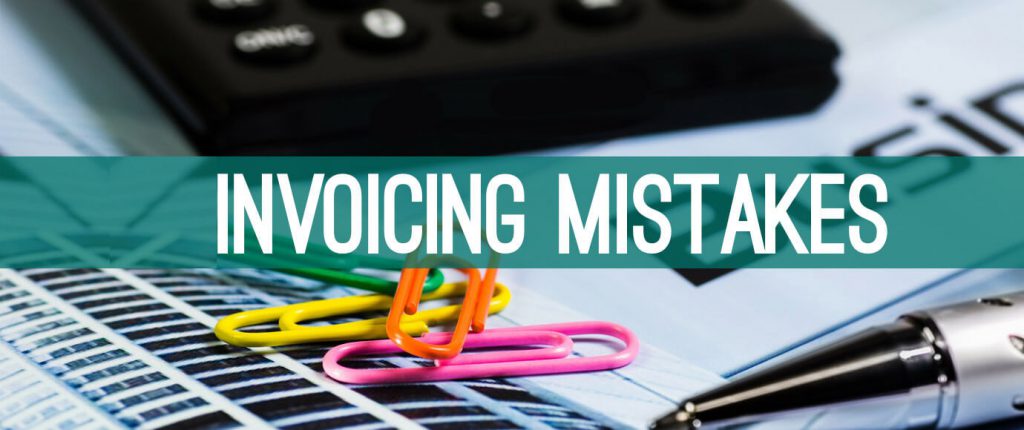Generating invoices is the most important part of accounting and GST. It might look easy at first glance but generating incorrect invoices may lead to some bad consequences such as late payments.
As a business owner, invoicing may seem like a tedious, straight forward task that doesn’t require your full attention. But, it’s absolutely crucial if you want your business to maintain a positive cash flow.
1. Missing Invoices
If invoices aren’t getting to their intended recipients, they’re not going to get paid. And if you’re using net 30 payment terms with your customers—and you don’t receive automatic confirmations of receipt then it may be a month or more before you even realize that the invoice is missing. This can significantly impact cash flow, not to mention force you to start the invoicing process all over again.
2. Sending Incorrect Invoices to Clients
Invoicing mistakes can happen even with all steps taken to avoid them. For example, one can mistype the customer’s name, contact information or the charges for a product/service. However, such mistakes can easily make clients lose a lot of money.
Take, for instance, a simple mistake like misplacing a decimal point in entries can exponentially increase a client’s debt obligations. When these mistakes happen repeatedly, clients become impatient and begin to distrust concerned sellers/businesses.
3. Having Unclear Terms
Avoid using vague language when writing out an invoice. If you want the client to pay the invoice quickly, make sure that you include clearly stated item descriptions, prices and quantities. Avoid any ambiguous language or descriptions.
If your clients also need to clearly understand when the payment is due by using ‘Days’ instead of ‘Net,’ as well as the consequences if these terms are broken.
4. Missing Data
If you want your invoices to be paid on time and without the need for additional human intervention, they have to be accurate. When the data that customers require to be able to process invoices is missing, there’s a good chance your payment will fall to the back of the line until someone figures out the problem.
5. Procrastinating
The best time to send out an invoice is immediately following the completion of a project or a sale. Unless you have another financial arrangement with your clients or customers, you can’t afford to wait to send out an invoice.
6. Negotiate Better Payment Terms
Negotiating better payment terms is another way to streamline invoice processing. Since you have agreed to a set of payment terms before commencing business with a client, you can refer to it in case of any delays.
Moreover, leverage that agreement and try to move up your payment dates as much as possible.
Nonetheless, you will still come across a client who will ask for longer payment duration, but you can always negotiate.
7. Wrong or Missing Contact Information
Most companies have a specific email box or employee to receive all incoming invoices. Larger companies may have multiple people handling this task across various corporate divisions. If your invoice doesn’t get to the right person, there’s a good chance it lands in the “lost letter pile” of invoices that never get paid. If you weren’t expecting to get paid until 30+ days after sending out the invoice, it will be at least a month before you catch the problem.
Step on Processing Invoice
Step 1: You Receive an Invoice from a Vendor
Vendors send an invoice once their work is completed, their service is provided, or their product is delivered.
Invoices typically arrive via mail (paper document) or email (PDF document).
The invoice information must be input into your accounting system. This work is typically done manually by an AP clerk, bookkeeper or – in smaller businesses – sometimes even a receptionist.
Step 2: A Copy of Vendor Invoice is Placed or Scanned Into your Filing System
As well as entering the data from the invoice into your system, best practices dictate that you make a copy or scan the invoice into your paper or electronic filing system as a backup. This is necessary in case discrepancies are later discovered. And it’s proper procedure for audit purposes.
If you are making and storing paper copies this means using rows and rows of filing cabinets. And keeping all of the paper copies organized so that you and/or auditors can easily find them if need be.
Perhaps your company has spent money to invest in an electronic invoice filing system. That’s great! But you still need to keep it well-organized and be vigilant about scanning and filing your invoices properly.
These steps take time and effort. But far less time and effort than searching for a lost invoice or a copy of an invoice when you need it!
Step 3: Invoice Approval
Now the invoice details are in your system and a copy of the invoice is filed. The next step of the process is getting it approved.
In a small business there might be 1 or 2 people who have the authority to approve the payment of invoices.
Step 4: Invoice Paid
Once the correct person or people authorize the invoice for payment, it needs to be paid. And this may involve sending it to the correct person or department to get it paid.
This step of the process can also take some time. And people lose paper or emailed approval requests. Or they get pushed down the manager’s inbox at busy times.

